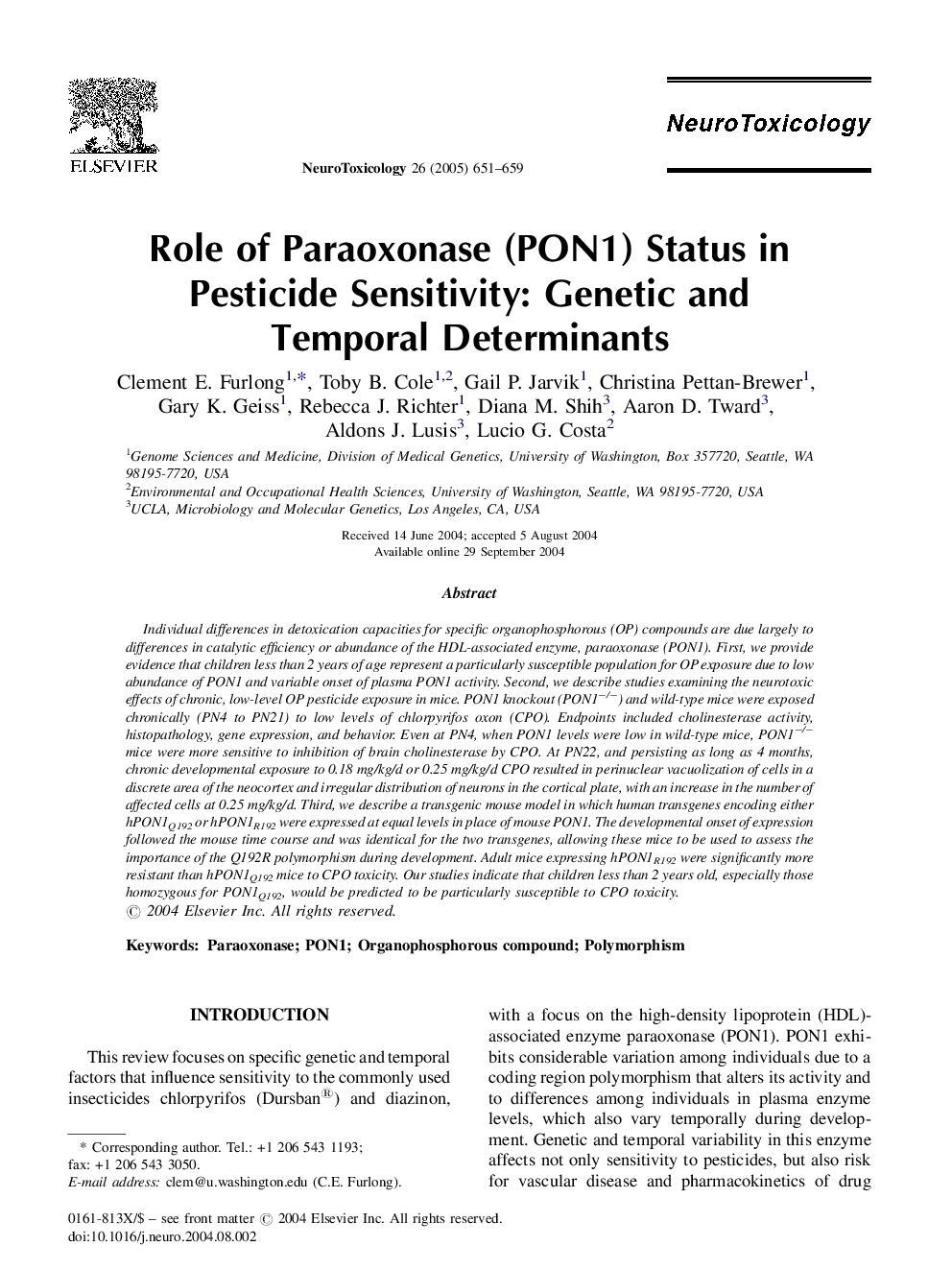| کد مقاله | کد نشریه | سال انتشار | مقاله انگلیسی | نسخه تمام متن |
|---|---|---|---|---|
| 9032159 | 1131733 | 2005 | 9 صفحه PDF | دانلود رایگان |
عنوان انگلیسی مقاله ISI
Role of Paraoxonase (PON1) Status in Pesticide Sensitivity: Genetic and Temporal Determinants
دانلود مقاله + سفارش ترجمه
دانلود مقاله ISI انگلیسی
رایگان برای ایرانیان
موضوعات مرتبط
علوم زیستی و بیوفناوری
علوم محیط زیست
بهداشت، سم شناسی و جهش زایی
پیش نمایش صفحه اول مقاله

چکیده انگلیسی
Individual differences in detoxication capacities for specific organophosphorous (OP) compounds are due largely to differences in catalytic efficiency or abundance of the HDL-associated enzyme, paraoxonase (PON1). First, we provide evidence that children less than 2 years of age represent a particularly susceptible population for OP exposure due to low abundance of PON1 and variable onset of plasma PON1 activity. Second, we describe studies examining the neurotoxic effects of chronic, low-level OP pesticide exposure in mice. PON1 knockout (PON1â/â) and wild-type mice were exposed chronically (PN4 to PN21) to low levels of chlorpyrifos oxon (CPO). Endpoints included cholinesterase activity, histopathology, gene expression, and behavior. Even at PN4, when PON1 levels were low in wild-type mice, PON1â/â mice were more sensitive to inhibition of brain cholinesterase by CPO. At PN22, and persisting as long as 4 months, chronic developmental exposure to 0.18Â mg/kg/d or 0.25Â mg/kg/d CPO resulted in perinuclear vacuolization of cells in a discrete area of the neocortex and irregular distribution of neurons in the cortical plate, with an increase in the number of affected cells at 0.25Â mg/kg/d. Third, we describe a transgenic mouse model in which human transgenes encoding either hPON1Q192 or hPON1R192 were expressed at equal levels in place of mouse PON1. The developmental onset of expression followed the mouse time course and was identical for the two transgenes, allowing these mice to be used to assess the importance of the Q192R polymorphism during development. Adult mice expressing hPON1R192 were significantly more resistant than hPON1Q192 mice to CPO toxicity. Our studies indicate that children less than 2 years old, especially those homozygous for PON1Q192, would be predicted to be particularly susceptible to CPO toxicity.
ناشر
Database: Elsevier - ScienceDirect (ساینس دایرکت)
Journal: NeuroToxicology - Volume 26, Issue 4, August 2005, Pages 651-659
Journal: NeuroToxicology - Volume 26, Issue 4, August 2005, Pages 651-659
نویسندگان
Clement E. Furlong, Toby B. Cole, Gail P. Jarvik, Christina Pettan-Brewer, Gary K. Geiss, Rebecca J. Richter, Diana M. Shih, Aaron D. Tward, Aldons J. Lusis, Lucio G. Costa,